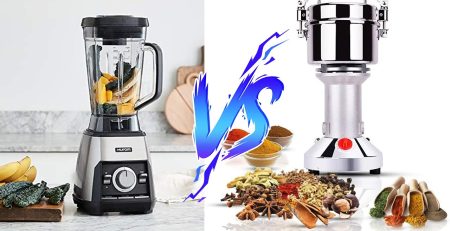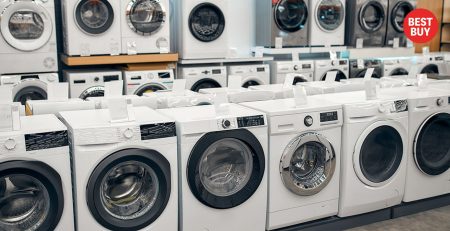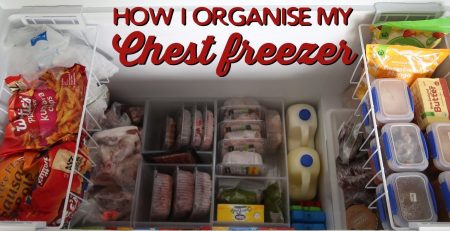Inverter Buying Guide 2024: Choosing the Best Inverter for Your Home
This inverter buying guide will discuss some of the key points to look out for when you want to acquire a power inverter and its battery.
Selecting the appropriate inverter and battery stands as key decisions when creating an effective power backup solution. This inverter buying guide will delve into selecting the best inverter and battery, along with determining the right capacity or size.
Power backup solutions, commonly referred to as inverters in Nigeria, play a crucial role in providing alternative power solutions.
There are three main components in a power backup setup:
1. Inverter
2. Battery for storing DC current
3. A power source (electricity grid or generator or solar panel) for charging the battery
Inverter Buying Guide
What Does an Inverter Do?
There are several sources of electricity needed to charge an inverter’s battery. However, the power grid is the default electricity source in many homes today.
During a power outage, the battery’s DC current needs to be converted to AC current using an inverter. In a nutshell, what the inverter appliance does is to convert stored DC current in the battery into AC current that can be used to power your electronics & home appliances.
We’ll discuss detailed guides for buying inverters and batteries in separate sections as we go further in this inverter buying guide.
Calculating Your Power Needs
Before you head out to purchase an inverter, try to figure out how much backup you need first or how many appliances you want it to power.
The table below provides the typical power consumption of common home appliances.
| Appliance | Power Needs (Wattage) |
| Fan | 80 |
| LED bulb | 7 |
| TV | 120 |
| Cable TV Decoder | 20 |
| Sound Bar | 50 |
For instance, if you want to power 4 fans, 3 LED bulbs, 1 TV, 1 Decoder, and 1 sound bar, the total power required would be (4 x 80 + 7 x 7 + 1 x 120 + 1 x 20 + 1 x 50) = 559 watts. This means the inverter you want must support at least 559 watts.
How to Calculate an Inverter’s Capacity
An inverter’s capacity depends largely on the total load or appliances you want it to power. The formula is simple: just divide the total load by the power factor.
The power factor accounts for efficiency loss during energy conversion, helping balance energy efficiency.
Inverter capacity is measured in Volt Ampere (VA), and you’ll find the VA rating mentioned in all product descriptions. Refer to the image below for guidance on identifying the VA rating.

In the table earlier, we noted that a total of 559 watts would be needed to power the mentioned appliances.
Thus, the VA rating of the inverter needed to power the appliances would be 559 / 0.8 = 699 VA.
This means the inverter to buy must have at least 699 VA rating. You’ll have to put this calculation into consideration when shopping for an inverter.
Difference Between Inverter VA and Battery WA
Typically, inverters are measured in VA, while batteries are measured in WA. We will go deeper into battery capacity in the battery buying guide.
Many wonder about the purpose of these two capacities and why they exist. Think of it like a ‘water well.’ Imagine using a bucket tied to a rope to draw water from the well.
The water in the well equates to the battery capacity, while the size of the bucket represents the inverter capacity.
The battery capacity is the total electricity stored, and the inverter capacity is how much can be served at a single time.
Pay attention to the information in this inverter battery guide as it is crucial to find the right match between battery and inverter capacity.
If you have a large capacity battery but a low-capacity inverter (e.g., 600 VA), you won’t be able to support appliances like a refrigerator or multiple fans, as their total load exceeds the 600 VA limit.
Difference Between Sine Wave Inverter and Square Wave Inverter
As mentioned before, the inverter changes DC current to AC current. However, the classification of inverters depends on how the AC current appears—either as a Sine wave inverter or Square wave inverter. The detailed distinctions are outlined in the table below.
| Feature | Sine Wave Inverter | Square Wave Inverter |
| Supported Appliances | PCs, laptops, ovens, refrigerators, etc. | Includes motor-based products such as fans, ovens, toasters, blenders, etc. |
| Appliance Safety | High level of safety | Low level of safety |
| Noise Level | Normal | High, emits humming noise in inverter as well as in appliances |
| Price | High | Cheaper |
Opting for a Sine wave inverter is a wise choice, despite the higher cost, for the safety and durability of your appliances.
There are also modified sine wave inverters, more affordable than sine wave but pricier than square wave, offering moderate performance.
However, they fall somewhat between sine wave and square wave, with very few models available in the market—making them easy to overlook. You can view a selection of efficient sine wave inverters here.
Key Difference Between a UPS and an Inverter
The major distinction lies in the time delay. Generally, UPS is employed to back up your system. If you connect a desktop computer to an inverter, any power loss results in shutting down the computer as it takes one microsecond to switch to the backup power solution.
Although inverters may not be ideal for computer backup due to this delay in switching, however, newer models of inverters now have the capacity to quickly switch power without the delay.
| Feature | Inverter | UPS |
| Power backup | LED lights, TV, fans and other home appliances | Desktop computer |
| Time delay to switch power during a power cut | Depends on the brand/model | Microsecond |
| Backup time | 10 – 20 minutes | 3 – 6 hours depending on the inverter/battery as well as the load |
| Maintenance | Requires water toppings in the battery as specific intervals | None required |
| Price | Expensive | Cheap |
| Set up | Requires technical support | Simple |
Before Purchasing an Inverter Review Your Home’s Wiring.
Homes should be equipped with power backup provisions. While it’s straightforward to provide backup for the entire home using an inverter from the main source, this requires a large-sized battery and inverter.
However, many people only wish to back up specific fans, lights, and appliances. In such cases, the wiring should be configured to allow the operation of these selected appliances on the inverter. Consult with your technician about the wiring requirements before purchasing an inverter and battery.
Keep in mind that larger appliances, like air conditioners and refrigerators, demand a higher power requirement to initiate.
For instance, a 1 KVA inverter is generally needed to support a refrigerator, and a 2.5 KVA inverter for a 1-ton AC. The battery requirements are also substantial. Therefore, in this inverter buying guide, we advise excluding these larger appliances from the inverter wiring plan.
Top Inverter Brands
There are several well-known inverter brands worldwide, however, one of the most popular is Su-Kam. Many of these brands also offer batteries alongside their inverters.
Opting for a combo is beneficial as it eliminates compatibility concerns. Below, we’ve highlighted a few carefully selected inverters for your consideration.
Top Sine Wave Inverters
Su-Kam Falcon Pure Sine Wave Inverter 900VA/12V (630 Watts)
Su-Kam Falcon+ Inverter Pure Sine Wave 1050VA/12V (735 Watts)
Su-Kam Falcon+ Pure Sine Wave Inverter 1600VA/24V (1120 Watts)
Su-Kam Falcon+ Pure Sine Wave Inverter 2500VA/24V (1725 Watts)
Su-Kam Falcon Pure Sine Wave Inverter 4KVA/48V (3000 Watts)
Su-Kam Colossal Pure Sine Wave Inverter 5KVA/96V (3500 Watts)
Su-Kam Falcon+ Pure Sine Wave Inverter 5KVA/48V (3500 Watts)
Su-Kam Colossal Pure Sine Wave Inverter 7.5KVA/120V (1P-1P) (6000 Watts)
Su-Kam Colossal Pure Sine Wave Inverter 10KVA/180V (1P-1P) (7000 Watts)
Where to Buy Inverter in Nigeria
Many inverters in Nigeria can be purchased online. However, for this inverter buying guide we recommend purchasing your inverter from an authorized distributor such as SIMS Digital Centres.
Not only will you be getting original products, you’ll also get access to a certified inverter installation expert to quickly get the inverter running in your home.
Final Checklist Before You Decide to Buy an Inverter
– For first-time buyers, consider getting both the inverter and battery at a go.
– Ensure your home has adequate earthing to prevent accidental electrocution. Seek assistance from a qualified professional for this.
– Prioritize products with longer warranties when shopping. Keep in mind that as the warranty period increases, the price of the battery may also rise.
Inverter Battery Buying Guide
How to calculate the inverter battery’s capacity?
Battery names, such as Su-Kam Tubular Battery, may include terms like AH or Ah. AH or Ah stands for Ampere Hour, indicating the amount of current the battery can supply for a specific duration.
For instance, a 100Ah battery capacity can be interpreted as:
– 100 Amperes of current for 1 hour
– 50 Amperes of current for 2 hours
– 25 Amperes of current for 4 hours
– 1 Ampere of current for 100 hours
To calculate the battery size, use the simple formula below: multiply the total load by backup hours, and then divide the result by the voltage.
Battery size = (Total load in watts) x (Backup in hours)
———————————————–
Voltage
Total load in watts
Consider the total watts the appliances in your home consume. For example, if you want to back up 6 lamps of 40 watts each and 3 fans of 75 watts, your effective power requirement for the total load would be calculated as 6 x 40 + 3 x 75, which equals 465 Watts.
Backup in hours
Determine the number of backup hours you need. It’s evident that as the number of backup hours increases, the required battery size also increases.
Voltage
The battery cell’s voltage, commonly known as Nominal voltage, is typically 12V for most top battery brands.
The table below provides clear examples of calculating battery size, serving as a handy tool, often referred to as an inverter battery calculator.
| Total load (Wattage) | Backup (in hours) | Recommended battery size |
| 600 W | 2 hours | (600 x 2) / 12 = 100Ah |
| 900 W | 2 hours | (900 * 2) / 12 = 150Ah |
| 1000 W | 3 hours | (1000 * 3) / 12 = 250Ah |
Types of Inverter Battery
In the market, you’ll find three main types of batteries: Flat plate battery, Tubular battery, and Sealed maintenance-free battery.
Each battery type differs based on its internal technology for storing current. Variations in safety, efficiency, battery life, maintenance, and price distinguish these options.
A detailed analysis of each battery type is provided below.
Flat Plate Battery
Flat plate batteries, belonging to the first generation and also widely used, fall into the category of lead-acid batteries.
Consisting of two electrodes—one made of lead and the other of lead dioxide—the electrolyte used is sulfuric acid. These batteries are lightweight and cost-effective depending on capacity.
However, flat plate batteries come with some drawbacks. They require more maintenance, necessitating the replenishment of mineral-free distilled water every 3 to 6 months.
Delaying this water top-up can lead to battery damage. Beyond maintenance concerns, flat plate batteries have a short lifespan and pose safety risks, emitting poisonous gases during charging and discharging.
Due to these issues, it’s recommended to keep them outside the home with proper ventilation. Given these drawbacks, flat plate batteries are gradually becoming outdated and are being replaced by tubular batteries.
In the current market, only a few brands still manufacture flat plate batteries, with some offering only a couple of models.
Tubular Battery
Tubular batteries represent an enhanced version of flat plate batteries. With a longer lifespan of up to five years, increased efficiency from deep charging cycles, and relatively low maintenance, they offer notable improvements.
The only downside is their higher cost. The key to their efficiency and extended battery life lies in replacing the positive plate with a tube, protected by a cloth. This distinctive tubular design gives these batteries their name.
Maintenance-Free Battery
True to their name, maintenance-free batteries eliminate the need for regular upkeep. Bid sayonara to the hassle of filling distilled water at regular intervals; this is made possible by a special type of electrolyte that doesn’t require replenishment.
One of the standout features is safety—maintenance-free batteries don’t emit any poisonous or harmful gases.
They are an ideal choice for older individuals or busy folks who lack the time for water refills. Maintenance-free batteries are also known as sealed batteries, Deep Cycle SMF Sealed Maintenance Free, or VRLA (Value Regulated Lead Acid).
However, it’s worth noting that many brands don’t produce this type of battery. Thus, finding them can be a challenge as they may be unavailable, out of stock, or some batteries may not be compatible with inverters.
The drawback of these batteries is a shorter lifespan and a higher price tag. Because of this, we strongly recommend choosing tubular batteries in this inverter buying guide. The table below clearly outlines the differences for easy understanding.
| Feature | Flat plate battery | Tubular battery | Maintenance-free battery |
| Battery Life | Low (approx. 3 Years) | High (approx. 5 Years) | Medium (3 to 4 Years) |
| Water toppings | High | Medium | Low |
| Maintenance | High | Medium | Low |
| Safety | Low | Low | High |
| Ventilation requirement | Yes | Yes | No |
| Releases harmful gases | Yes | Yes | No |
| Weight | Low | High | Depends on the model |
Avoid Unauthorized Local Battery Makers
Choosing a high-quality inverter but opting for a local brand battery can be a problematic decision for several reasons.
Local brands often neglect safety and efficiency standards, resulting in a relatively shorter lifespan for their batteries.
While local brands may highlight their affordability, offering prices nearly half of established global brands, it’s crucial to prioritize selecting the right battery over the inverter, especially regarding safety.
Many local batteries emit fumes and poisonous gases, like carbon monoxide, and reputable brands ensure emissions are at the lowest levels.
This safety aspect is often overlooked by local brands. Local batteries may also demand excessive maintenance work.
Additionally, they usually lack warranty or guarantee coverage. It’s strongly advised not to purchase refurbished batteries, even if they come at a lower price, as they are likely to be unsafe and have a shorter lifespan.
Check for Inverter Compatibility
Another thing to check for in this inverter buying guide is to ensure compatibility between the battery and inverter.
Calculate the ideal battery capacity by multiplying total power with backup hours and dividing the result by voltage.
The inverter’s VA is directly linked to the total power needed. For instance, if your inverter is 150 VA and you require a 2-hour backup, a 25Ah battery is adequate, while a 200Ah battery might be deemed unnecessary and a waste of money.
Some inverters may not support high or low battery capacities, so it’s crucial to consider “inverter compatibility.”
For first-time buyers, opting for inverter and battery combos from a specific brand is a wise choice, as these packages typically include an inverter and a compatible battery.
Also, be sure to purchase from an authorized distributor. If you have any questions regarding compatibility, you can ask their experienced personnel to explain to you and offer the best tips.
Opt for Batteries with Long Warranty
When it comes to inverter batteries, the landscape of guarantees and warranties differs due to their susceptibility to damage.
Unlike most home appliances, inverter batteries are more prone to issues. Consequently, you may encounter instances where two batteries with similar specifications vary in price based on their warranties.
Opting for a longer warranty is advisable, even if it entails spending a bit more. In the context of inverter batteries, the guarantee often implies free replacement within a specified duration in case of damage.
On the other hand, warranty pertains to the period during which free repairs are provided. For instance, if an inverter battery has a 2-year guarantee and a 3-year warranty, it means the battery will be replaced for free within 2 years and can undergo cost-free repairs for malfunctions within the 3-year warranty period.
Note that some manufacturers may use the term “Warranty replacement” in place of “Guarantee.”
Best Inverter Battery Brands and After Sales Support
Choosing from reputable brands is crucial when it comes to inverter batteries. In Nigeria, one of the top and well-known brands is Su-Kam.
Reliable after-sales support is essential, especially for unforeseen situations such as battery repairs or replacements.
Many leading brands like Su-Kam go the extra mile by offering services like distilled water top-ups, where their representatives visit your home to replenish the distilled water levels in the battery.
Inverter Battery Prices
As mentioned earlier, the cost of inverter batteries varies depending on factors such as battery type, brand, capacity, warranty, and the dealer. When looking up inverter prices, take note of the following:
- If you’re want to exchange an old battery, inquire from your vendor if they offer additional discounts on the new battery’s original price when you sell your old one back to them.
- Products with longer warranties often come at a higher cost.
- It’s essential to inquire about additional costs, such as transportation and installation fees, and whether they are included in the overall battery cost or excluded.
Keep in mind that prices may vary from dealer to dealer. You may want to visit the dealer’s store or call to confirm the prices before placing an order.
Where to Buy Inverter Battery in Nigeria
Inverter batteries fall into the category of hazardous materials, making them somewhat unsafe. It’s essential to take precautions during storage and transportation.
Due to these safety considerations, only a limited number of batteries are available online in Nigeria. For this inverter buying guide, we recommend buying inverter battery at any SIMS Digital Centre in Nigeria.
Recommended Inverter Battery to Buy
Some of the best tubular batteries you can buy in Nigeria include:
Su-Kam Tall Tubular Batteries 200AH/12V
Su-Kam Tall Tubular Batteries 220AH/12V
How to Prolong Inverter Battery Life
To enhance the lifespan of your inverter battery, consider these simple practices:
- First and foremost, regularly top up the distilled water at the appropriate intervals. Depending on your battery type and usage, this may range from one to three months. Set a reminder in your smartphone calendar or develop a routine to check every first of the month.
- Apply grease to the socket connections to prevent corrosion or rust. If corrosion is present, remove it using an old brush, hot water, and baking soda.
- Allow the battery to discharge completely once a month and then recharge it. This process helps refresh the inner electrolyte.
- Avoid connecting high-load devices to the inverter and refrain from overusing appliances when not necessary. Opting for energy-efficient home appliances also reduces the strain on the inverter battery.
Final Words
By following the information in this comprehensive inverter buying guide, we believe that you will be loaded with sufficient knowledge required to guide you in your quest to purchase an inverter power backup for your home.








Leave a Reply